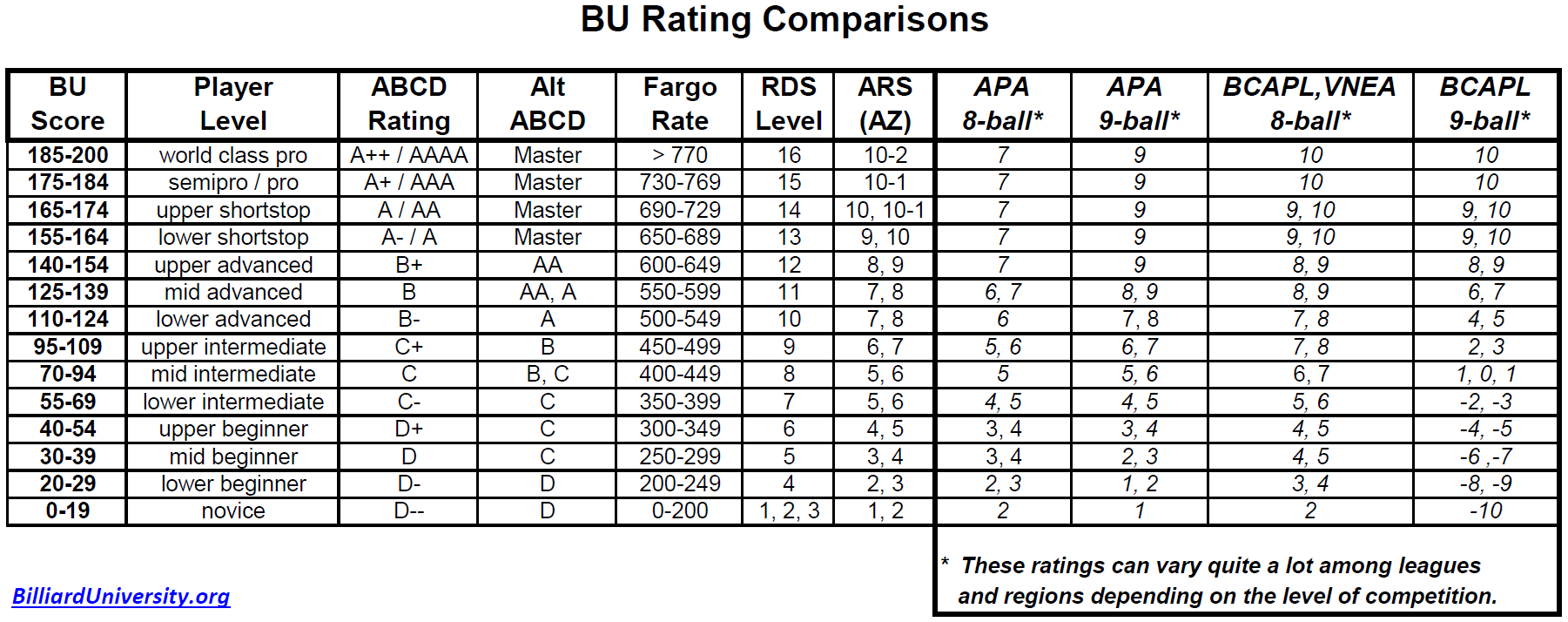How does the FargoRate rating and handicapping system work?
The FargoRate rating and handicapping system, which is different from the Fargo rating drill, is a statistics-based system for tracking player abilities. Here’s a video summary of what it is, and here’s an explanation of the math behind the system. Here’s a rough interpretation of the numbering:
800 – top world-class professional
700 – top player to pro level; a threat to run six in a row if the break is working; world-class female player.
600 – has run three-in-a-row multiple times and maybe four-in-a row a time or two; high run in 14.1 of 50-60.
500 – good local league player; runs out first time at the table occasionally.
400 – runs out first time at the table infrequently.
300 – common level of play for non-competitive league players; running out is very unlikely.
200 – beginner; has probably never run a table.
100 – novice with poor eye-hand coordination.
The table below summarizes how FargoRate ratings compare to other common player rating systems, including Billiard University (BU) Playing-Ability Exam scores:

For more information, see “Player Ratings” (BD, December, 2020).
The following webpage allows you to look up Fargo Ratings for different players and determine a probability for one player to beat another in given race: fairmatch.fargorate.com.
The Salotto app can be used by anyone to set up matches and enter results into the FargoRate system.
If you don’t have a FargoRating, you can approximate your rating with playing-ability tests like the Runout Drill System (RDS) or the Billiard University (BU) Playing Ability Exams. They assess a wide range of important pool skills in a methodical, thorough, and consistent way. They also provide both numeric and descriptive player-level ratings.
Dr. Dave keeps this site commercial free, with no ads. If you appreciate the free resources, please consider making a one-time or monthly donation to show your support:
